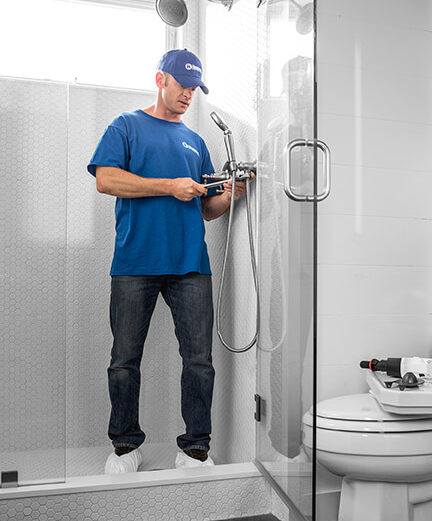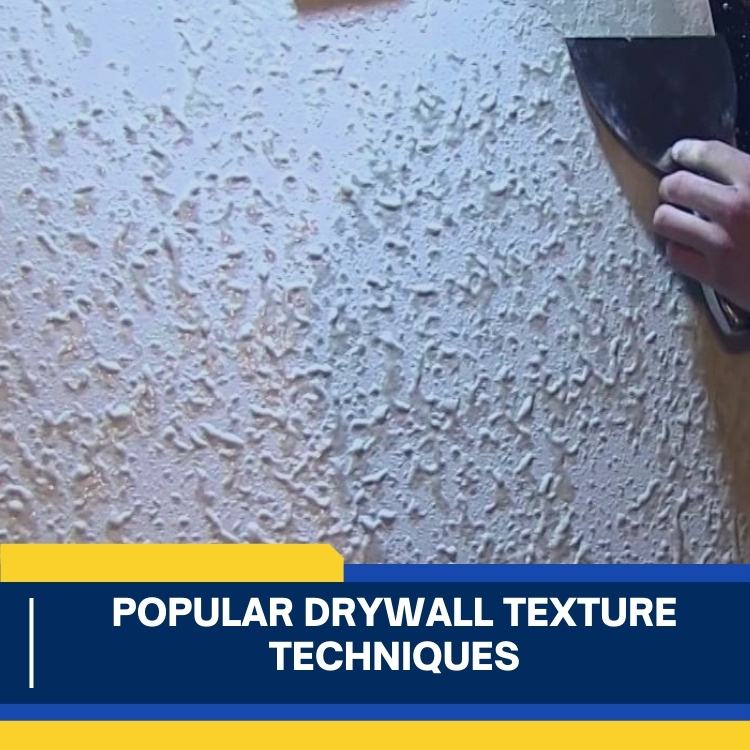We offer a wide range of services for that fresh look, or just maintenance or updates to keep your home functioning and safe. Regardless of the size of the job, we have a craftsman that can tackle it. We offer a wide range of services for that fresh look, or just maintenance or updates to keep your home functioning and safe. Regardless of the size of the job, we have a craftsman that can tackle it.

Drywall / September 20, 2021

If you have cosmetic blemishes or architectural imperfections in your sheetrock, textured drywall can be an effective way of covering them up. Even if you are not trying to cover up any underlying flaws, applying texture with the help of drywall services in Calgary can add unique styling, warmth, and personality to a room. There are many different techniques used to create drywall texture, each creating its own individual effect. Learning more about these styles and techniques can help you decide which to use for your walls.
The slap brush technique produces a texture of intricate ridges that fits in well with a craftsman-style home. For this technique, you need a stiff-bristled brush. After applying a thin, even layer of drywall mud to a section of the wall with a paint roller, dunk the bristles of the brush into the drywall mud and slap it against the wall. Do the same on the next section until the whole wall is covered. This technique is also called crow’s feet or stomp brush. Overlapping the brush marks is acceptable and even encouraged.
The rosebud technique for wall texture is very similar to the slap brush technique. It is different in that you use a round stippling brush and make each slap precise and deliberate, so that you don’t overlap the impressions that you are making, instead of slapping at random. The result is clear, distinctive, round impressions resembling blooming rose blossoms. Use this technique on the walls of a romantic bedroom or a sunroom overlooking a garden.
This classic style gives the wall a subtly pitted consistency similar to the outer rind of citrus fruits. You start by turning the drywall mud into a thick liquid by adding water. Use a compressor and spray gun to apply it to the walls. While the liquid mud is still wet, run a roller over the surface. This process is repeated after the first coat dries to achieve the desired effect.
If you were to draw a comb through wet drywall compound, it would leave a distinctive groove behind. That’s where the comb texture gets its name, even though the stylish grooves are actually created with a toothed trowel. You use this to create whatever patterns you want when the compound is still wet after you have rolled it onto the wall. Popular patterns include fan shapes resembling fish scales, concentric circles that overlap, and wide rainbow-shaped arcs. Whatever pattern you decide on, this texture would complement a room with art deco elements very well.
The sand swirl technique uses the same sweeping fan patterns as the comb technique. For sand swirl, you use a thick-bristle brush rather than a toothed trowel, creating broad, random swirls. The material is a mixture of water or primer with sand that you allow to sit overnight before applying it to the wall.
Spanish lace is one of the most ornamental wall textures available, but because it is so intricate, creating it can be a challenge. It is similar to the slap-brush technique in that the drywall mud should have the same consistency, but you could use a spray gun to apply it to the wall instead of a roller. While the mud is still wet, you carve intricate motifs in a repeating pattern into it using a knife. Think about the patterns formed by the lace in a Spanish mantilla for inspiration. Use the colour of your choice to paint over your textured designs. Repeat the full process once the first layer dries. Use a lighter shade of the same paint color to complete the look.
Before you can add texture, you have to have drywall, and that is where Handyman Connection comes in. We handle drywall installation, home repairs, and so much more. Learn about all the services we offer in Calgary.